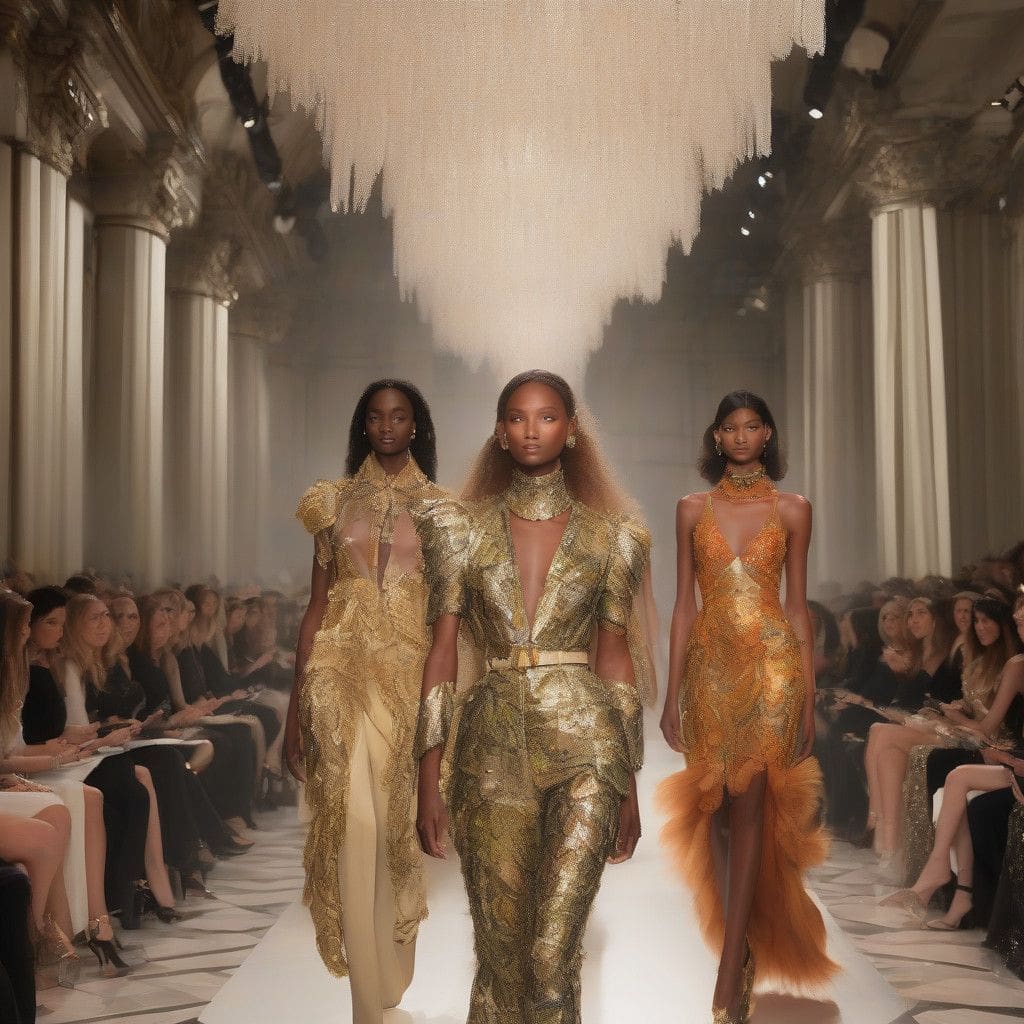In a bold and provocative display at Paris Fashion Week, two of the most revered houses, Dior and Saint Laurent, each presented their interpretations of strength and femininity, highlighting the lasting influence of feminine archetypes. Both houses showcased their Spring/Summer 2025 collections, emphasizing a powerful narrative of resilience and dynamism amidst the backdrop of the celebrated Olympic spirit reverberating through the city.
Dior, led by Maria Grazia Chiuri, stepped onto the runway with an audacious approach. In an unexpected yet stirring opening, she featured performer SAGG Napoli, an artist wielding a bow and arrow evoking images of Diana, the goddess of the hunt. This dramatic performance set the tone for a collection deeply inspired by historical notions of femininity—the Amazon warriors of ancient lore. Rather than focusing solely on aesthetics, Chiuri aimed to forge a connection between ancient female myths and contemporary fashion, translating those narratives into athletic yet chic garments.
The designs bore vestiges of both heritage and modernity. Key elements included a repeated motif of asymmetry—shoulders bared as a nod to the myth that this stance improved the archery skills of Amazon warriors. The collection also revisited the legacy of Dior’s own past, borrowing traits from the iconic Amazone dress from 1951, a sophisticated black wool creation. The garments explored technical fabrics reminiscent of the 1970s Dior Sportswear line, presenting a blend of sporty elegance and nostalgic homage.
Chiuri’s collection resonated well, particularly in light of the recent success of the Paris Olympics. The athletic influences were evident in the use of body-conscious silhouettes, complemented by knee-length gladiator shoes that served not only as fashion statements but also as symbols of strength and agility. The playful incorporation of bold patterns, like racing stripes and checkerboard designs, added energy to the collection. However, towards the end, the grand finale with chiffon goddess gowns seemed somewhat misplaced, as the promise of strength that characterized the earlier pieces took on a more romantic, less grounded air.
On the other side of the fashion spectrum, Anthony Vaccarello of Saint Laurent also invoked themes of strength, albeit through a lens of androgyny. The male-female exchange in fashion was at the forefront as broad-shouldered silhouettes dominated the runway. Vaccarello’s designs featured double-breasted suits, generously oversized blousons, and luxurious silken robe-like garments, thus redefining women’s power dressing for the modern era. In doing so, he called upon the character of Yves Saint Laurent—celebrated for both his innovative spirit and his deep connection to the narrative of feminine allure and empowerment.
The set-up for the Saint Laurent show added to its emotive impact. Models sashayed down a reflective navy floor that mirrored the heavens above. Yet, in a twist of fate, the grand backdrop, expected to be illuminated by elegant moonlight, was unexpectedly replaced by rain, which merely enhanced the dramatic ambiance of the evening. This atmospheric touch played into the enchanting melancholy evoked by the collection.
The collection drew parallels to healthcare staples, reflecting influences of Vaccarello’s previous menswear creations but with an unmistakable twist—each piece was designed to assert a definitive statement of bold femininity. With embellished metallic fabrics, lace up corsetry, and rich textures, Saint Laurent presented an image of the “super heroine,” where each outfit conveyed an uncompromising vision of its wearer.
As the shows unfolded, it became inevitable that both Dior and Saint Laurent would embody competing interpretations of the modern Amazon. Chiuri sought to entwine history with contemporary athleticism while Vaccarello focused on emotional expression through androgynous tailoring and fearless color clashes. The resulting collections serve as testament to the dynamic nature of women’s fashion and its ability to reflect societal narratives of power, resilience, and transformation.
The runway proved to be more than a platform for clothing; it was a battlefield where narratives of femininity were asserted—one rooted in history and the other firmly in the anticipation of what is to come. As the curtains fell on Paris Fashion Week, the legacy of the Amazonian women resonates deeply not just in fashion but as a societal ethos guiding the evolution of style.












